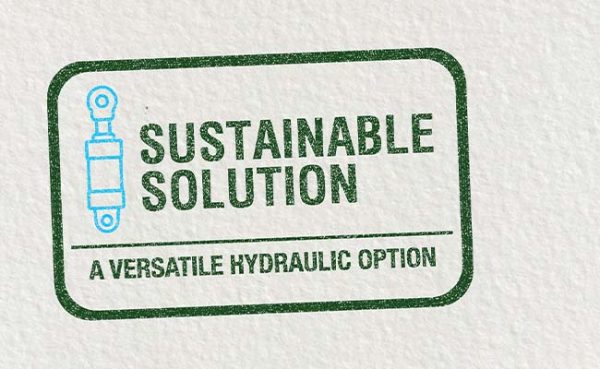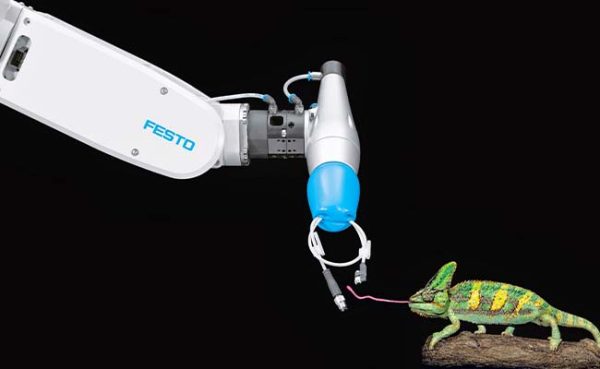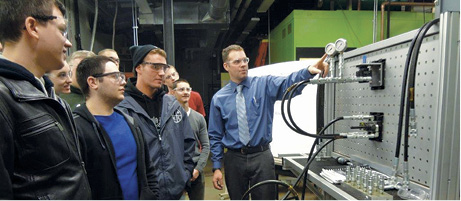Beating the Heat
Some of you may have noticed some challenging issues with your air compressors, dryers, or quality of the compressed air during the hot, steamy summer months. If measures are not taken to reduce the ambient temperatures around your air compressors, then problems will develop in the short term and long term that will hurt your pocketbook.
In some ways, air compressors are their own worst enemies. A fully loaded 30-hp, 22-kW air compressor will produce about 22 kW of heat. This is equivalent to a furnace required for a large home during winter in the northern U.S. states. Of course if all this heat is confined to a small compressor room in the hot days of summer, some challenges may arise. But quite often, this heat is directed away from the compressor room in metal ductwork.
Most of the heat a compressor produces comes out of the lubricant cooler and compressed air after-cooler. On air-cooled compressors, these coolers typically have some method of connecting to square ducting. But radiant losses from ductwork and heat expelled by compressor motors and air dryers can still cause room overheating.
Excessive heating can have negative effects on compressed air equipment:
- The room air will be less dense, and as a result, the compressor will produce less air.
- The compressor motor will run at higher temperatures, increasing its losses and causing reduced insulation life.
- Electronic controls, such as variable-speed drives, can fail at high ambient conditions or cause problematic transient tripping.
- The compressor oil can age more quickly at elevated temperatures, losing its lubricating properties and causing reduced compressor-bearing life.
- The frequency of nuisance over-temperature trips can increase with higher temperatures, reducing system reliability.
- The compressed air produced by the compressor is hotter; as the temperature of the discharge air increases, it holds more moisture, with water content doubling approximately every 20°F.
- Air dryers that are sized for normal ambient conditions are not capable of handling higher moisture loads at high temperatures and may allow water contamination to pass into the facility’s piping system.
- Free water in steel piping systems can cause rusting, and this contaminated water can migrate into expensive tools and equipment connected to the compressed air system.

The solution to these problems is to ensure proper compressor room cooling is designed and installed when your compressor is installed. Air-cooled compressors and dryers need a plentiful supply of cool, clean, and dry ambient air to maintain adequate operating temperatures. The compressor manufacturer will have air flow requirements specified for adequate ventilation air; find these and ensure the ventilation is designed for at least the specification. Remember that skin losses heat the room by radiation, so cross ventilation fans are often required to remove this heat before it is ingested by the air compressor or dryer intake or cooling systems. Applying insulation to metal ductwork is also an excellent way to control radiant heat loss. Some buildings have an inherent negative pressure that will reduce the flow of ventilation air in ductwork that is connected to outdoors; in these cases, the onboard compressor cooling fans may not be enough on their own and additional booster fans may be required.
Getting rid of the heat in summer to reduce your costs is important, but keeping the heat in winter is also a good way to reduce your costs if your plant needs additional space heating. Your compressor can be like a free electric furnace, displacing other heating energy and saving you money. Often additional control ducting can be placed in compressor room ventilation with a summer and winter position. In summer, the heat can be directed outside; in winter, it is sent into areas needing the heat. Some manufacturers even offer heat-recovery packages on compressors that can be used to recover the heat of compression to a flow of liquid that can be used in process loads, boilers, hot water tanks, and other devices. Use of these recovery packages takes the heat load off the compressor lubricant cooler and can actually help extra liquid cooling for an air-cooled compressor to help in extremely hot summer conditions.
Air compressors and dryers produce lots of heat, which must be adequately dealt with or trouble will find your system. Proper removal of this heat will allow your compressed air system to last longer; remain more trouble free; and maintain a good, clean, and dry supply of compressed air for your facility.
Reinforce your industry expertise with a Pneumatic Mechanic, Technician, or Specialist certification. Apply online at www.ifps.org.
By Ron Marshall for the Compressed Air Challenge
Learn more about heat recovery at one of the Compressed Air Challenge seminars. For a schedule of events, visit www.compressedairchallenge.org.







